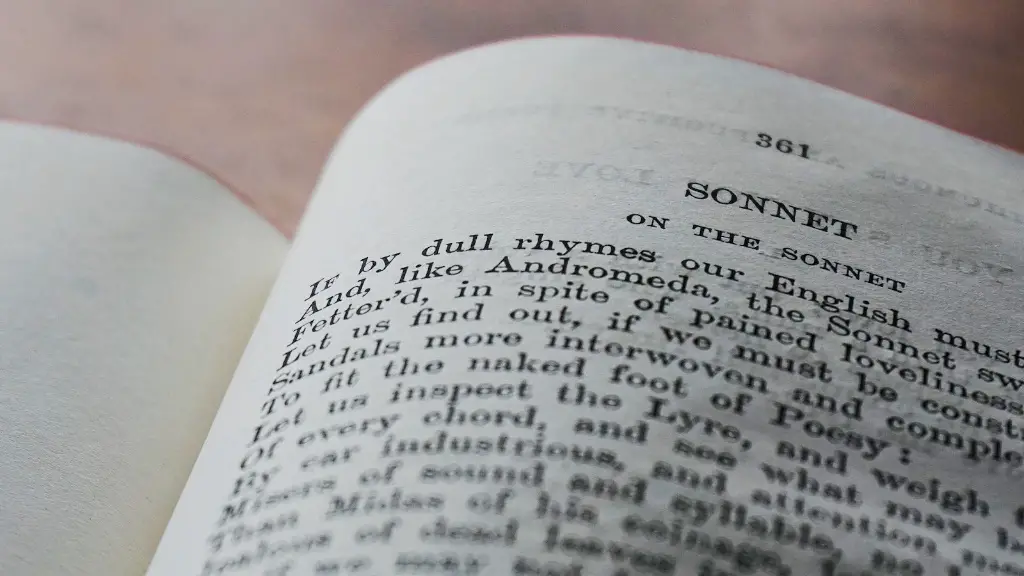The beauty of poetry lies in its ability to capture emotions and feelings in a way that prose cannot. When read aloud, these feelings and emotions can become even more palpable, allowing the reader to be fully immersed in the poem. To truly connect with a poem and to do it justice, a reader should master the skill of reading poetry aloud to make the poem come alive. Here are a few tips to keep in mind when reading poetry aloud.
Understanding the poem
Before reading a poem out loud, it is important to take time to understand the poem. Read the poem a few times and allow yourself to sit with it and understand the deeper meaning and nuances, as well as its structure. Begin by acknowledging the metaphors and symbols, and think about the main idea the poem is trying to convey. Ask yourself questions such as what emotions does it evoke? What story does it tell? Once the poem has been sufficiently analysed, it will be easier to move to the next step.
Practice
When reading poetry aloud, practice makes perfect. Read the poem aloud as if it is stories being told, paying attention to pauses, inflection, and the rhythm. Start slow and gradually speed up, while still emphasizing certain words or terms to bring out the full impact of the poem. If a line of the poem ends with a comma, semicolon, or ellipsis, pause and allow the readers to contemplate the words that were just read. Alternatively, if the line ends with a period, pause for a couple of seconds for a dramatic effect.
Volume
When reading a poem aloud, volume plays an important role in the success of the performing. Allowing the volume to waver and vacillate can help emphasize certain words, while also keeping the reader engaged. By increasing the volume at certain parts and decreasing it at others, a reader can bring out the nuances of the poem, while still allowing it to “breathe”. Keep the volume at a low volume when reading the introductory lines, and slowly increase it as the poem progresses to its climax.
Emotion
Emotion is key when it comes to reading poetry aloud. As readers, it is essential to understand the inner thoughts and feelings of the poem, so that the audience can feel it too. Express the emotion with your voice, and use to provide a greater emphasis on words with strong emotions. For example, if the poem talks about loss and sadness, the readers should express these in a quiet yet meaningful voice. The idea is to capture the emotions of the poem in a way that transports the audience.
Body Language and Gestures
Body language and gestures also play an important part in reading poetry aloud. Use your hands, head and body to bring out the themes and emotions of the poem. While some poems may require subtle gestures, other poems may require more dramatic gestures. However, no matter how dramatic the gestures may be, they should be used to bring out the lines in a meaningful way, rather than being distracting.
Speech and Pronunciation
In order to understand a poem, it is important that the reader be able to pronounce certain words and phrases correctly. Incorrect pronunciation will make the poem sound unfamiliar and unclear, and can make the poem difficult to understand. Similarly, it is important to keep one’s accent in mind when reading a poem, as this may have an impact on the poem’s sound and rhythm. If the poem has words that are unfamiliar, take time to research the meaning and pronunciation of the words.
Delivery
The delivery of a poem needs to be spot on for it to be effective. Keep the pace of the poem in mind and use pauses when necessary. When suspending a word or phrase, make sure to do it in a way that highlights the meaning of the phrase or word, rather than distracting the audience. For example, if the poem talks about a moment of joy, a reader should make sure to judge the timing and suspend the words to capture the emotion.
Timing
When reading poetry aloud, timing is critical: it is important to read the poem at the right pace, so that the poem still sounds poetic. Too slow, and it can make the poem sound clunky, while too fast can make it difficult to follow along. When practising, find the right speed to read the poem and strive to stick to it. It may also help to focus on breath control, as it can help keep the rhythm steady.
Engage the Audience
One of the key elements of reading poetry aloud is audience engagement. A poem should be read with such passion and enthusiasm that it can captivate the audience and transport them to another world. Speak directly to the audience, and make sure to pause for them to absorb the message of the poem. This will help connect the audience to the poem and ensure that they are truly engaged.
Rehearsal
It is important to practice the poem before reading it out loud to the audience. Rehearse the poem in private and make sure to include all of the above-mentioned tips. Make sure to practice until the poem can be delivered without any mistakes or hesitation, and run through it multiple times, so that the poem will be easier to memorize.
Using Props
Using props at the right moment during a poem is a great way to further engage with the audience and enhance the overall performance. Props can range from photographs, music and theatrical props. When using props, the key is to use them in the most effective way, to minimize disruption and ensure that the focus remains on the poem. For example, if the poem is about nature, the inclusion of a flower or a leaf could help the audience connect to the poem in a more meaningful way.
Be Confident
Finally, when reading poetry aloud, it is important to be confident in the performance. Have faith in the poem and the words that are being spoken, and do not be afraid to express emotion. Often times, a poem can take on a new life when expressed with confidence, so it is important to be confident in the performance and believing in the poem and its message. Remember, the audience is there to appreciate and be captivated by the performance.


